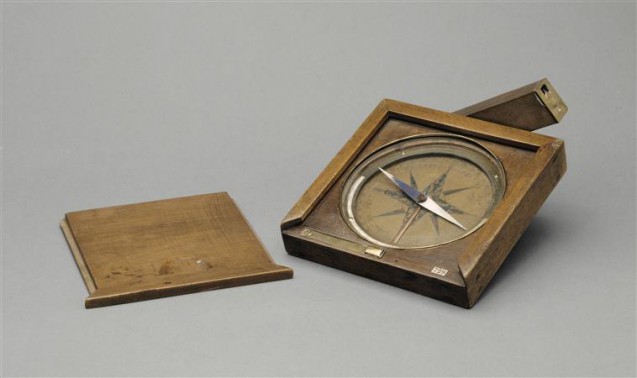The compass was brought to Europe by the Arabs during the Mediaeval period, it rapidly became an essential tool for soldiers and sailors alike, achieving almost a supernatural, almost magical status. In the 13th century, the scientist Pierre de Mauricourt studied the physics of magnets, becoming the first to establish a link between compasses and the earth’s magnetic core. Mauricourt in fact discovered that the compass needle marked longitudinal curves converging on the poles when placed near a magnetic stone. And this was to remain the level of the science for hundreds of years as the use of a compass and improved maps became crucial for success either on board ship or on campaign.
It was quite natural then that during the 18th century, the use of the compass was taught in French military schools. Bonaparte began learning how to use his at the École Royale militaire de Brienne in 1779, via lessons on fortifications and map drawing. This relatively rudimentary object – made of wood, copper and leather – was given to all the grant-aided pupils at the school on entering the royal establishment.
The nearly-ten-year-old Napoleon arrived at Brienne-le-Château on 15 May, 1779 with aim of cramming for entrance into the Paris École Militaire. All grant-aided scholars at Brienne had to be noble, and Napoleon’s father, Charles Bonaparte, had ratified the family’s noble status in 1771. Also required was the recommendation of a member of the upper nobility. The Count Marbeuf, Governor of Corsica, and also protector of the Bonaparte family, was to stand as guarantor for the young Bonaparte.
Conditions at Brienne were Spartan. The only visits allowed took place in the visiting parlour. This was in fact the only direct contact pupils had with the outside world, apart from summer Sundays when groups were allowed out.
Napoleon was not especially happy during his five years at Brienne. He was remembered there as a loner, only interested in books and fiercely proud of his native Corsica. He was thus mocked for his strong accent.
That being said, in later life, the Emperor remembered at least the town with affection, in that in his will made out on St Helena he was to leave the extraordinary sum of one million francs to the town. Brienne (along with Méry-sur-Seine) had been the site of fierce fighting in 1814 during the Campagne de France, and the General Gourgaud famously saved Napoleon’s life there from an attack by cossacks.
E.J. with P.H. (translation P.H.)
June 2019


